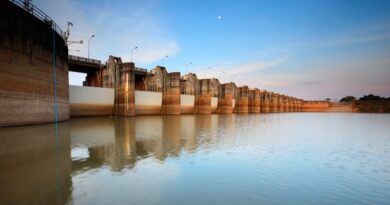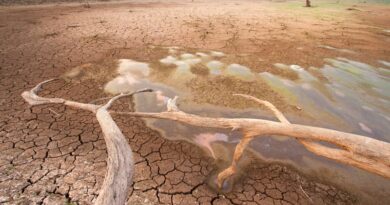More nature-based solutions urged to accelerate adaptation to water-related climate impacts

The United Nations Environment Programme (UNEP) has called on the international community to step up efforts on nature-based solutions (NbS) to facilitate adaptation to climate change and water hazards in developing countries.
The recently released UNEP Adaptation Gap Report 2020 states that climate adaptation is now widely embedded in policy and planning across the world, but levels of engagement and the quality of instruments are vastly different between countries.
The report states that nature-based solutions are increasingly recognised as particularly useful in the face of water-based climate hazards such as coastal and inland flooding and erosion as well as drought.
Although pointing to positive progress in the use of NbS in specific local programmes, the report identifies an urgent need for “system-scale approaches to achieve the full potential of their benefits”. This will involve “planning and coordination across national or jurisdictional boundaries”, the report notes.
According to the UNEP report, while adaptation financing is rising, it continues to be outpaced by rapidly increasing costs. This is particularly striking in developing countries likely to bear the brunt of climate change. However, the potential for NbS for reducing specific climate risks is rarely explicitly recognised and that only a small proportion of climate finance is targeted towards NbS for adaptation, it underlined.
“Additional adaptation finance is critical to enhance adaptation planning and implementation and limit climate damages, particularly in developing countries. While adaptation costs may be higher for developed countries in absolute terms, the burden is higher for developing countries relative to their gross domestic products, adding to their generally more constrained financial, technical and human capacities”, the report said.
Strong mitigation action would significantly reduce unavoidable damage costs, particularly in Africa and Asia, which will bear the brunt of future adaptation impacts. “According to recent literature, a 2°C trajectory may be able to limit annual global growth depression to 1.0–1.6 per cent when compared with a 3°C trajectory with annual losses in the range of 1.5–2.2 per cent of global world product. At the same time, the benefits of investing in adaptation often outweigh the costs”.
The Global Commission on Adaptation estimated that a $1.8 trillion investment in the areas of early warning systems, climate resilient infrastructure, improved dryland agriculture, global mangrove protection and resilient water resources could generate $7.1 trillion of avoided costs and non-monetary social and environmental benefits.
The UNEP report said cumulative investment in climate change mitigation and adaptation projects by the four major climate and development funds stands at $94 billion. However, only $12 billion has been spent to-date on nature-based solutions, marking a tiny fraction of total adaptation and conservation finance.
Successful examples of NbS programmes in developed countries include the restoration of flood plains, wetlands and mangroves to regulate water flows and prevent coastal flooding, according to an environment policy paper published last year by the OECD.
While there have been some positive impacts on biodiversity, the report points to the additional economic benefits of such measures derived from recreation and tourism. However, it acknowledges that the timescales, spatial considerations, dynamic uncertainties and diffused benefits “can lead to NbS being a bad fit for decision making within institutional, regulatory and financial processes that have all been developed with grey infrastructure in mind”.
Although stressing that NbS for adaptation can cost less than hard engineering approaches, and deliver more substantial co-benefits, the report outlines a number of challenges in their successful implementation. In addition to timescale and space considerations, it cites the need for “extensive and sustained engagement of a wide range of stakeholders”.
The report also pointed out that despite an increase in finance available for adaptation, the adaptation finance gap is not closing. International public adaptation finance is slowly rising, however there is insufficient data to identify such a trend in domestic public or private finance flows.
At the same time, annual adaptation costs in developing countries alone are currently estimated to be in the range of $70 billion, with the expectation of reaching $140–300 billion in 2030 and $280–500 billion in 2050.
As adaptation finance and adaptation costs are difficult to compare, all that can be deduced using the available evidence is that, given the pace of climate change and impacts, the adaptation finance gap is not narrowing as a result of current efforts. Providers of development finance are not integrating adaptation well enough across their activities.
While multilateral support for adaptation as a share of overall multilateral development finance has risen significantly, bilateral support as a share of overall bilateral development finance has only increased slowly between 2013 and 2017.
Moreover, the ongoing COVID-19 pandemic is expected to further aggravate the finance gap by constraining public finances at both national and international levels.



